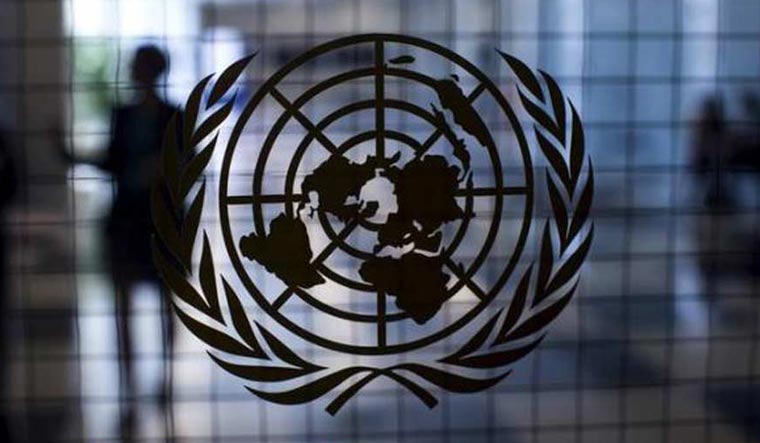The UN has warned that without a significant de-escalation in violence in Afghanistan, the year 2021 is on course to witness the highest number of documented civilian casualties in over a decade in the war-torn country.
The UN Assistance Mission in Afghanistan's (UNAMA) Afghanistan Protection of Civilians in Armed Conflict Midyear Update 2021 documents 5,183 civilian casualties (1,659 killed and 3,524 injured), a 47 per cent increase compared with the same period in 2020.
In the report, the United Nations warns that without a significant de-escalation in violence Afghanistan is on course for 2021 to witness the highest ever number of documented civilian casualties in a single year since UNAMA records began in 2009.
The report said that of serious concern is the acute rise in the number of civilians killed and injured in the period from May 1, as international military forces began their withdrawal and the fighting intensified following the Taliban's offensive. Almost as many civilian casualties in the May-June period were recorded as in the entire preceding four months.
The number of civilian casualties during May and June 2,392 in total (783 killed and 1,609 injured) was the highest for those months since UNAMA began its systematic documentation in 2009. The period January-April 2021 saw 2,791 civilian casualties (876 killed and 1,915 injured), it said, amid withdrawal of US forces and the Taliban offensive.
I implore the Taliban and Afghan leaders to take heed of the conflict's grim and chilling trajectory and its devastating impact on civilians. The report provides a clear warning that unprecedented numbers of Afghan civilians will perish and be maimed this year if the increasing violence is not stemmed," Secretary-General's Special Representative for Afghanistan Deborah Lyons said.
The UN envoy, who is also the head of UNAMA, called on the Taliban and Afghan leaders to intensify efforts at the negotiating table, stop the Afghan against Afghan fighting, protect the Afghan people and give them hope for a better future.
According to the report, civilian casualties increased for women, girls, boys, and men. Of particular concern, UNAMA documented record numbers of girls and women killed and injured, as well as record numbers of overall child casualties.
Particularly shocking and of deep concern is that women, boys and girls made up close to half of all civilian casualties in the first half of 2021, UNAMA said.
Comprising 46 per cent of all civilian casualties, 32 per cent were children 1,682 in total (468 killed and 1,214 injured) and 14 per cent were women 727 in total (219 killed and 508 injured). It is sickening to report that more women and more children were killed and injured than ever before recorded by UNAMA for the first half of any calendar year, it said.
Much of the battlefield action during the most deadly months of May and June took place outside cities, in areas with comparatively low population levels. The UN is gravely concerned that if intensive military action is undertaken in urban areas with high population densities, the consequences for Afghan civilians could be catastrophic, it said.
The pursuit of a military solution will only increase the suffering of the Afghan people, the report notes.
The report said anti-government (AGEs) elements were responsible for 64 per cent of the total civilian casualties: 39 per cent by Taliban, nearly nine per cent by Islamic State-Khorasan Province (ISIL-KP), and 16 per cent by undetermined AGEs.
Pro-Government Forces (PGFs) were responsible for 25 per cent of civilian casualties: 23 per cent by Afghan national security forces, and two per cent by pro-Government armed groups or undetermined PGFs.
The report noted that this is the first report since UNAMA began its systematic civilian casualty documentation in 2009 that does not attribute a single civilian casualty to international military forces. The conflict has taken on a distinctly Afghan fighting Afghan character.
The leading causes of civilian casualties in the first half of 2021 were the extensive use of improvised explosive devices (IEDs) by AGEs, ground engagements between parties, targeted killings by AGEs, and air strikes by the Afghan Air Force, it said.
The main cause of civilian casualties the Taliban and ISIL-KP use of non-suicide IEDs amounted to 38 per cent of all civilian casualties, nearly triple that recorded for the same period in 2020.
The use of pressure-plate IEDs, nearly all by the Taliban, resulted in 42 per cent more civilian casualties than during the same period in 2020. Pressure-plate IEDs, which can be triggered even by a child stepping on them, may violate international humanitarian law and UNAMA reiterates its call on the Taliban to permanently ban the use of these indiscriminate devices, the UN report said.
Ground engagements caused 33 per cent of civilian casualties, with nearly all of these civilian casualties attributed to the Taliban and Afghan national security forces. Civilian casualties from ground engagements increased by 41 per cent compared with the first six months of 2020, it said.
UNAMA also recorded a resurgence of deliberate sectarian-motivated attacks against the Shi'a Muslim religious minority, most of whom also belong to the Hazara ethnic minority, nearly all claimed by ISIL-KP, the UN mission said.





